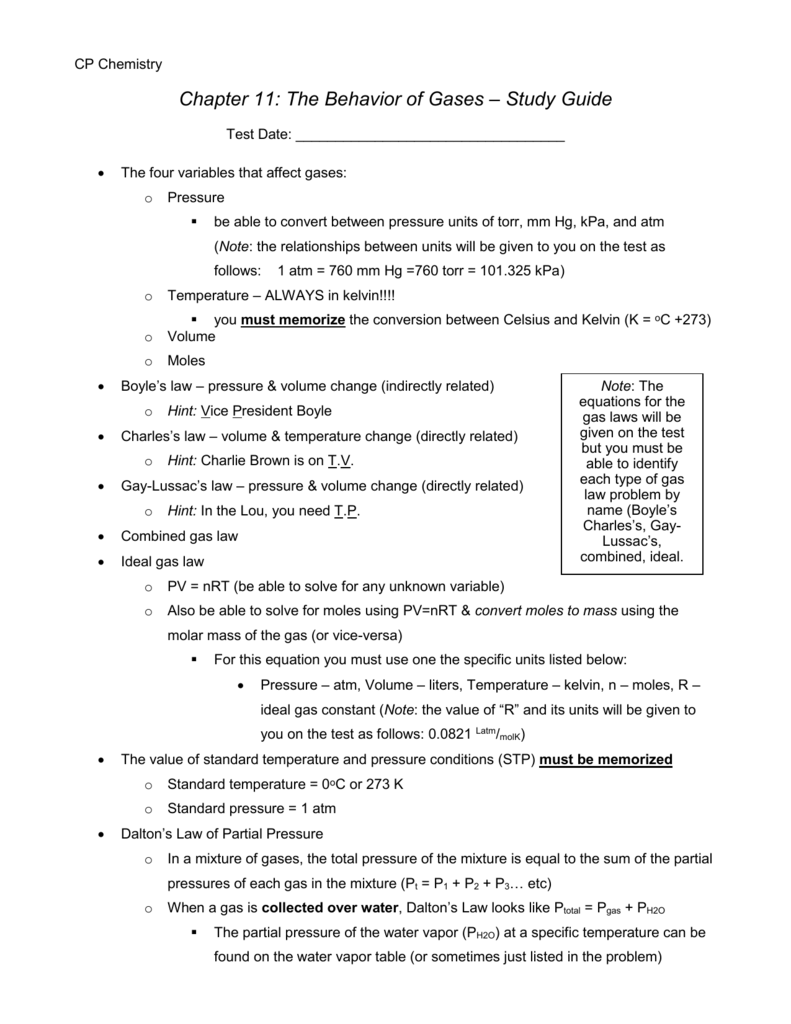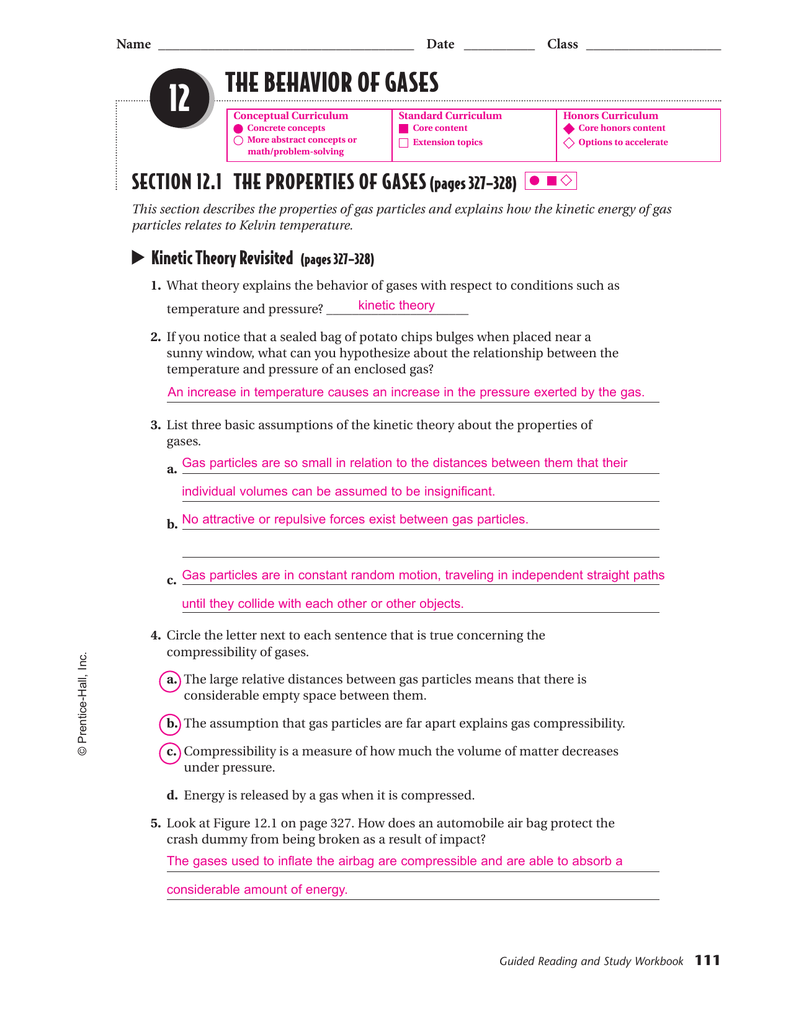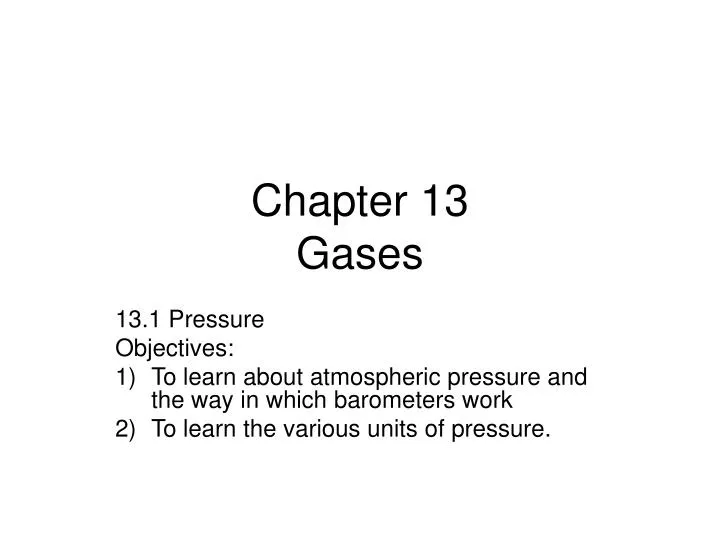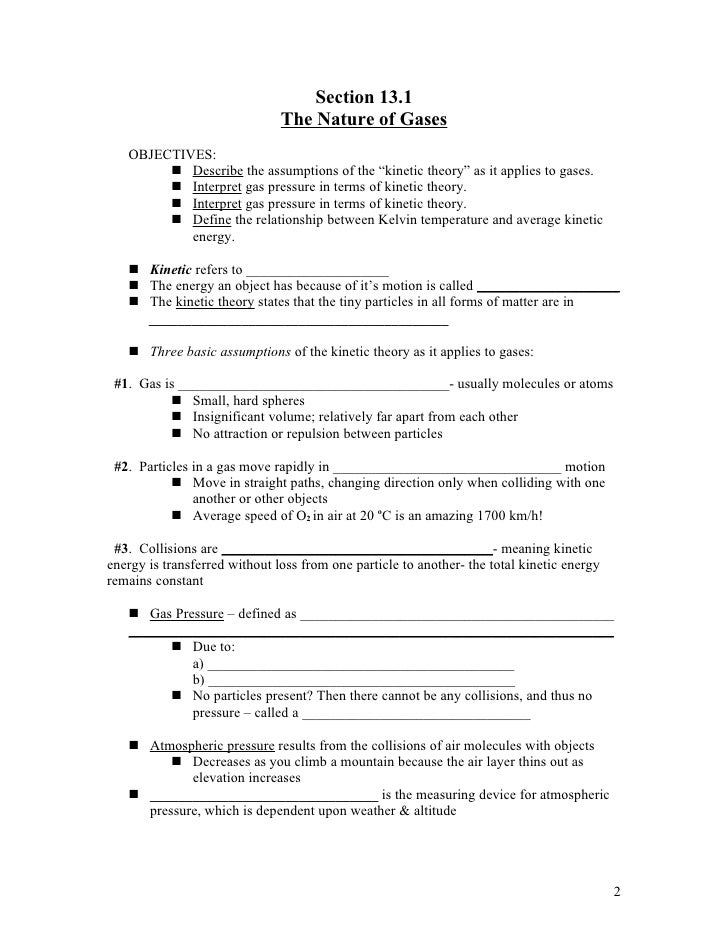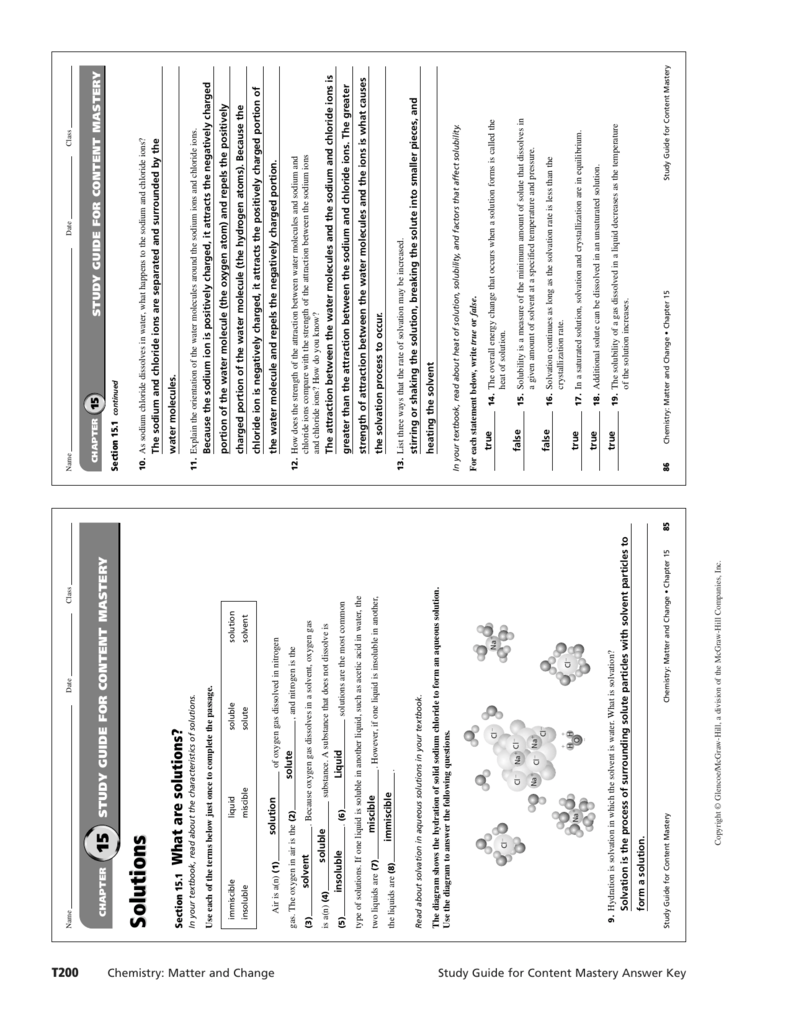Chapter 13 Gases Answer Key
Chapter 13 Gases Answer Key - For the gas laws, temperature must be in kelvin. • to describe and explain the relationships between the properties of gases. Web click the card to flip 👆. Sound can travel through (a) gases only (b) solids only (c) liquids only (d) solids, liquids and gases. Weblinks standardized test practice chapter test practice careers in chemistry concepts in motion interactive tutor personal tutor vocabulary eflashcards section 1: Which of the following statements is true? The law that states that the volume of a gas is directly proportional to the temperature of a gas when pressure is constant. 8.3 stoichiometry of gaseous substances, mixtures, and reactions; The ideal gas law section 3: This combines other 3 gas laws for a fixed amount of gas…
Web tk = 273 + tc. 2.) gas can be compress. Volume, number of particles, temperature, and pressure. (pressure = force/area) 6.) pressure of a gas. When using charles law what the temperature must be expressed as. 3.) gas fill their containers. Matter and change chapter 13: 4.) gas can diffuse (spread around) 5.) gas has exact pressure. Web equilibrium systems are pervasive in nature; 8.2 relating pressure, volume, amount, and temperature:
8.3 stoichiometry of gaseous substances, mixtures, and reactions; The pressure varies directly with the kelvin temperature when volume remains constant (the force changes the same way as the kelvin temp.) p (1)/t (1)= p (2)/t (2) as pressure increases temp. What do we mean when we say molecular view of matter? Can you draw a diagram to describe what particles might look like at the molecular level for solids, liquids, and gases… 3.) gas fill their containers. Web gases have volumes that depend on their conditions, and can be compressed or expanded by changes in those conditions. 4.) gas can diffuse (spread around) 5.) gas has exact pressure. The various reactions involving carbon dioxide dissolved in blood are examples (see figure 13.1). The law that states that the volume of a gas is directly proportional to the temperature of a gas when pressure is constant. When using charles law what the temperature must be expressed as.
Chapter 9 Exam Key [IDA]
(pressure = force/area) 6.) pressure of a gas. Web chapter 13 states of matter they are locked in a rigid 3d pattern and can only vibrate in place. The partial pressure of n2 is 101kpa what happens when a piston is used to decrease the volume of a contained gas? 8.3 stoichiometry of gaseous substances, mixtures, and reactions; Lilia has.
10+ Chapter 14 The Behavior Of Gases Answer Key CharisLoumeo
What do we mean when we say molecular view of matter? Chapter 13 states of matter section the nature of gases answer key… Web chapter 13 states of matter they are locked in a rigid 3d pattern and can only vibrate in place. For the gas laws, temperature must be in kelvin. Web results from the collisions of atoms and.
Chapter 13 The Gas Laws Study Guide Answers Study Poster
Weblinks standardized test practice chapter test practice careers in chemistry concepts in motion interactive tutor personal tutor vocabulary eflashcards section 1: The law that states that the volume of a gas is directly proportional to the temperature of a gas when pressure is constant. 3.) gas fill their containers. • to describe and explain the relationships between the properties of.
chemistry ideal gas law worksheet
9.2 relating pressure, volume, amount, and temperature: • to describe the particle nature of both real and ideal gases. This combines other 3 gas laws for a fixed amount of gas… Chapter 13 states of matter section the nature of gases answer key… Volume, number of particles, temperature, and pressure.
PPT Chapter 13 Gases PowerPoint Presentation, free download ID1248342
Volume, number of particles, temperature, and pressure. 8.4 effusion and diffusion of gases; The pressure varies directly with the kelvin temperature when volume remains constant (the force changes the same way as the kelvin temp.) p (1)/t (1)= p (2)/t (2) as pressure increases temp. 8.3 stoichiometry of gaseous substances, mixtures, and reactions; Web equilibrium systems are pervasive in nature;
Chapter 13 Gases
8.4 effusion and diffusion of gases; Web move faster a box with a volume of 22.4 l contains 1.0 mol of nitrogen and 2.0 mol of hydrogen at 0degrees c. Web chapter 13 states of matter they are locked in a rigid 3d pattern and can only vibrate in place. This combines other 3 gas laws for a fixed amount.
10+ Chapter 14 The Behavior Of Gases Answer Key UzemaBaizah
This chapter provides a thorough introduction to the essential. Liquids and solids are known as _______. The partial pressure of n2 is 101kpa what happens when a piston is used to decrease the volume of a contained gas? The pressure varies directly with the kelvin temperature when volume remains constant (the force changes the same way as the kelvin temp.).
Chemistry Chapter 13 Interpreting Graphics Answers FerisGraphics
This combines other 3 gas laws for a fixed amount of gas… Web results from the collisions of atoms and molecules in air with objects. The conversion of a liquid to a gas. This section shows how we can combine. • to describe and explain the relationships between the properties of gases.
glencoe/mcgrawhill answer key science
This combines other 3 gas laws for a fixed amount of gas… Matter and change chapter 13: Liquids and solids are known as _______. 8.4 effusion and diffusion of gases; Sound can travel through (a) gases only (b) solids only (c) liquids only (d) solids, liquids and gases.
Ch 4 study guide answers
The pressure varies directly with the kelvin temperature when volume remains constant (the force changes the same way as the kelvin temp.) p (1)/t (1)= p (2)/t (2) as pressure increases temp. Weblinks standardized test practice chapter test practice careers in chemistry concepts in motion interactive tutor personal tutor vocabulary eflashcards section 1: Although the particles of matter in solids.
Which Of The Following Statements Is True?
Web gases have volumes that depend on their conditions, and can be compressed or expanded by changes in those conditions. Matter and change chapter 13: • to describe the particle nature of both real and ideal gases. Can you draw a diagram to describe what particles might look like at the molecular level for solids, liquids, and gases…
8.4 Effusion And Diffusion Of Gases;
• to describe the properties of gases that can be used to explain their characteristics: 8.2 relating pressure, volume, amount, and temperature: Web chapter 13 states of matter they are locked in a rigid 3d pattern and can only vibrate in place. The ideal gas law section 3:
The Pressure Varies Directly With The Kelvin Temperature When Volume Remains Constant (The Force Changes The Same Way As The Kelvin Temp.) P (1)/T (1)= P (2)/T (2) As Pressure Increases Temp.
Web click the card to flip 👆. 3.) gas fill their containers. Web 23 collisions per second. Web volume of a given amount of gas is directly proportional to its kelvin temperature at constant pressure.
9.4 Effusion And Diffusion Of Gases;
9.3 stoichiometry of gaseous substances, mixtures, and reactions; Web equilibrium systems are pervasive in nature; Web move faster a box with a volume of 22.4 l contains 1.0 mol of nitrogen and 2.0 mol of hydrogen at 0degrees c. The law that states that the volume of a gas is directly proportional to the temperature of a gas when pressure is constant.
![Chapter 9 Exam Key [IDA]](https://s3.studylib.net/store/data/008705375_1-06d160f5b6385719cbd53063a787dab3.png)
